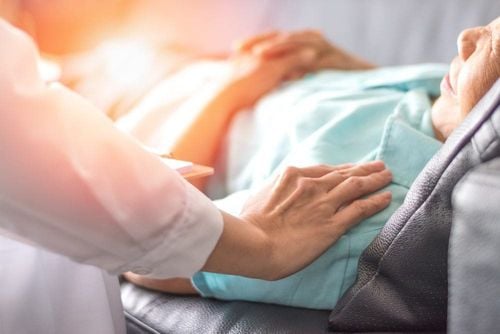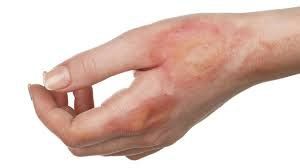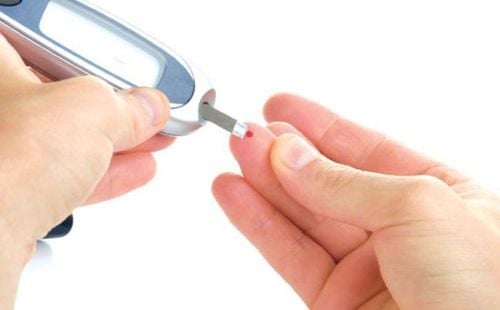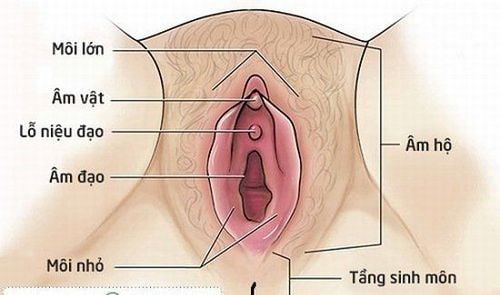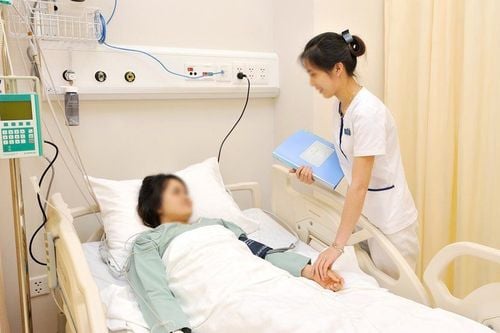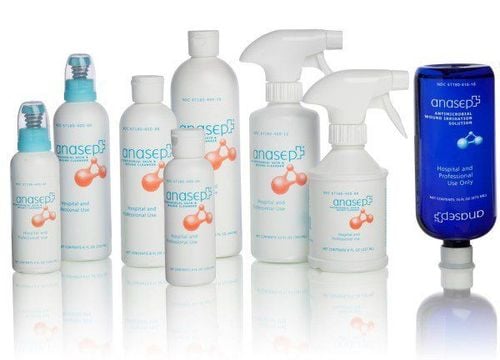This is an automatically translated article.
Posted by Emergency Resuscitation Doctor - Emergency Resuscitation Department - Vinmec Phu Quoc International General Hospital
Pressure ulcers are easy to appear if you don't know how to take care of the patient properly. In fact, the treatment of pressure ulcers is not an easy job because most of the causes of the disease are due to the influence of several organs in the body.
1. What is a pressure ulcer?
Pressure ulcers are defined by changes in the skin and subcutaneous tissue caused by pressure on bony projections. If not noticed these forces will cause ulcers. Accordingly, the best treatment for pressure ulcers is prevention, but in the most optimal conditions there are also cases where it is not preventable.
Pressure ulcers in the elderly have the highest rate, due to long-term hospital stay, patients with spinal injuries, or cardiovascular disease are at high risk of pressure ulcers. Factors that contribute to the formation of pressure ulcers include nutritional deficiencies, volume loss, weight gain or loss, anemia, fecal incontinence, renal failure, diabetes mellitus, malignancy, medication use sedation, major surgery, metabolic disorders, smoking and being bedridden or in a wheelchair. After all, the skin of the elderly itself decreases in thickness and elasticity, increasing the risk of injury when under pressure.
Injury mechanism: due to pressure, sliding forces, friction and moisture. More than 90% of pressure ulcers occur on bony prominences of the lower body. The time and pressure required to cause tissue destruction depends on the existing risk factors. The second causative factor is shear forces, caused by sliding of adjacent surfaces, which compress the capillary currents of the subcutaneous layer, e.g. lifting the patient's upper body Sliding pressure acting on the patient's amputee. Friction is the force created when two surfaces move past each other such as a patient sliding on a bed, the force of friction causes damage to the epidermis. Finally, humidity increases the risk of pressure ulcers, and a strong correlation exists between urinary incontinence and ulcers. Because of the increased risk of skin infections, when there is pressure ulcer in the sacrum, long-term urinary catheterization is indicated when the patient loses control.
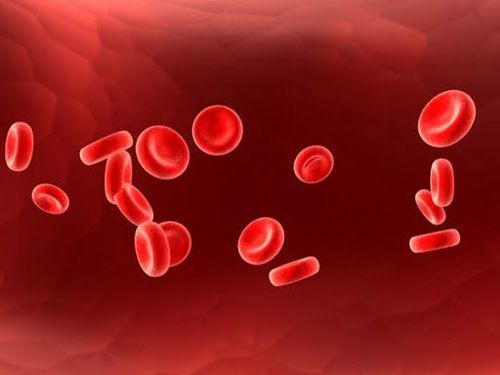
Thiếu máu khiến tình trạng loét nghiệm trọng hơn
2. Clinical assessment of pressure ulcers
The best assessment of a pressure ulcer is to classify the ulcer according to its severity according to the depth of the lesion.
Grade I pressure ulcers: Acute inflammatory response in all layers of the skin, manifesting as a well-defined erythematous area without re-whitening against a background of intact skin. Grade II pressure ulcers: Manifested by disruption of the epidermis and dermis, surrounding erythema, or sclera, or both. It is the result of a widespread inflammatory response leading to a fibroblast response. Grade III pressure ulcers: The inflammatory response is characterized by a completely uneven skin ulcer that extends into the subcutaneous tissue but has not yet penetrated the underlying mite. Here the lesion has a background of fluid, foul odor, and necrosis. Grade IV pressure ulcers: Penetrates deep into the fascia, destroying the last barrier to spread. Clinically, it resembles a grade III pressure ulcer, but bones, joints, or muscles may be affected. Complications of pressure ulcers are associated with significant morbidity and mortality. Most complications present with grade III and IV ulcers and these include cellulitis, osteoarthritis, joint infection, acute pyelonephritis, and tetanus. Tetanus complicates pressure ulcers, so it is advisable to prevent tetanus against tetanus with antiserum and vaccination with tetanus vaccine.
3. How to prevent pressure ulcers?
Because of the high morbidity and mortality rates and the potential economic burden of having to treat the problem, prevention is the primary goal. Identifying patients at risk is the first step in selecting preventive measures.
At-risk patients should be evaluated regularly and placed in environments that promote soft tissue growth. This development can be achieved through the use of proper postural techniques and support surfaces. The patient's skin should be examined to detect red areas that are indicative of early pressure changes. When changing positions, the patient must be lifted without being dragged out of the bed or stroller to avoid creating friction that damages the epidermis. Avoid lifting the patient's upper body to a height greater than 30 degrees to limit sliding forces.
Special types of mattresses, beds, and mechanical devices are available and are effective in preventing pressure ulcers from changing pressure on the bony projections. Instruments such as gel cushions, foam cushions, seat cushions, and sheepskin cushions are effective in preventing pressure ulcers in specific anatomical sites. No single device is effective in preventing all pressure ulcers.
Static buoyancy mattresses, modified with barometric mattresses, air-liquid beds will help prevent and treat pressure ulcers. These beds tend to be depressurized by the use of gas or supernatants to maintain an even distribution of the patient's weight. However, such facilities cannot replace basic nursing care.
Pressure ulcer preventive care has also been associated with amelioration of medical conditions that predispose patients to developing pressure changes. Nutritional deficiencies, loss of self-control and immobility must be limited. Nutritional status is assessed upon admission to the hospital or nursing home: Once an ulcer has developed, the nutritional status is often already compromised, severely damaged and difficult to correct.
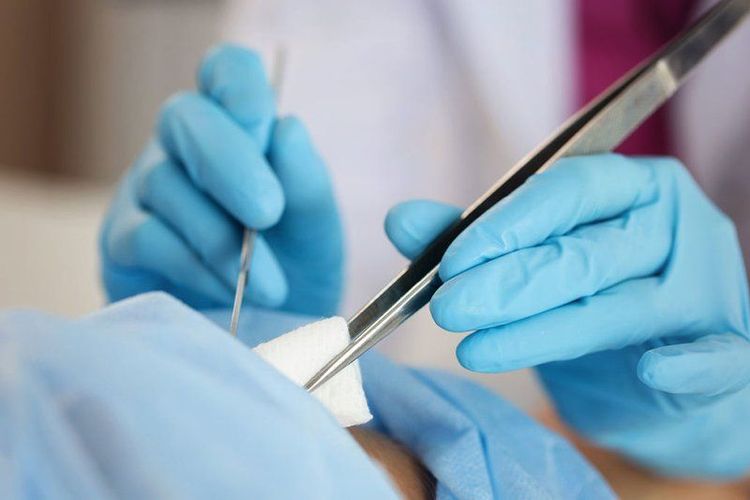
Chăm sóc ngăn ngừa loét tỳ đè
4. Treatment of pressure ulcers
The first step in the management of pressure ulcers is to assess the extent of the ulcer and the patient's overall condition, including nutritional status. Regardless of the severity of the ulcer, it is important to follow the principles of prevention outlined above.
4.1. Clean the wound and remove the necrotic tissue
The main aim of pressure ulcer treatment is to create an environment that promotes healthy granulomatous tissue. The wound was washed without discomfort with gauze soaked in physiological saline, irrigated the wound and washed with whirlpool water. The use of cytotoxic antiseptics such as hydrogen peroxide and povidon-iod should be avoided.
Necrotic tissue prevents wound healing and creates favorable conditions for infection. The ideal method for resection of necrotic tissue in pressure ulcers is a compact surgical dissection of the necrotic tissue. Enzyme ablation using factors such as fibrinolysin, collagenase, and dextranomer should only be used in the intervals between surgical excision to help dissolve the necrotic layers. thin element that is less accessible when cutting. Because these elements cannot penetrate through rot or remove large amounts of tissue, their use is limited. There is no evidence that topical antibiotics are effective in cleaning wounds and drying dressings. Furthermore, topical antibiotics can sensitize tissues, promote the emergence of resistant microorganisms, and cause systemic toxicity.
4.2. Bandage
As soon as the wound is clean, if there is visible granulation tissue, the use of a dressing that promotes healing is recommended. The rule of thumb is to keep the ulcer moist and dry the surrounding skin. Additional factors for dressing choice include the purpose of exudation control, and time requirements with caregivers. The dressing of choice consists of gauze impregnated with saline solution and a occlusive dressing.
The reason for using bandages is that they can usually stay in the sore for a few days, whereas the dressing will have to be changed several times a day. This convenience is particularly useful for outpatient ulcer management. These dressings should not be used in the presence of clinical infection.
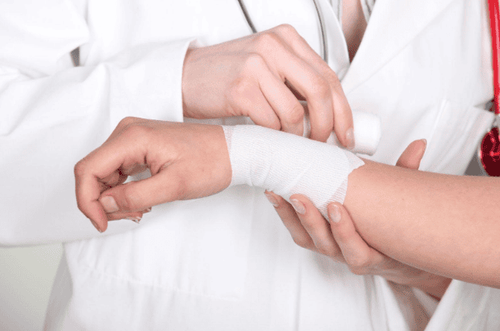
Băng bó vết loét để tránh nhiễm trùng
4.3. Treatment of complications
The two most common complications are infection and non-healing wounds. For clean wounds that do not heal, the patient's overall condition must be reassessed and a 2-week trial of a broad-spectrum topical antibiotic should be administered. In patients requiring surgery, surgery may need to be considered to treat non-healing wounds. Systemic antibiotics are appropriate for complications such as sepsis, soft tissue infection, or osteomyelitis.
Vinmec International General Hospital is a hospital not only famous for its high expertise but also full of modern standard medical equipment. In particular, the examination and treatment procedures at Vinmec are carried out by a team of highly qualified and well-trained medical doctors, which will bring high treatment efficiency.
To register for medical examination and treatment at Vinmec International General Hospital, you can contact Vinmec Health System nationwide, or register online HERE.




